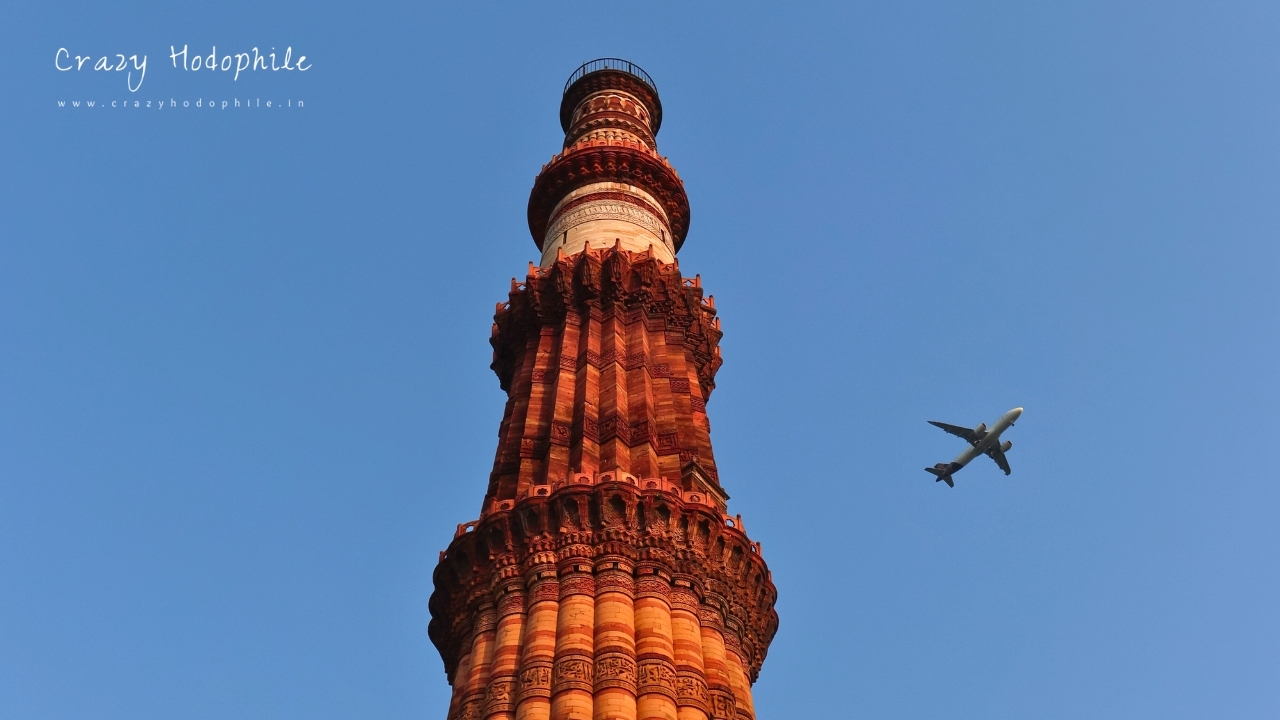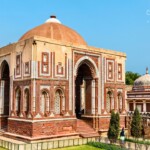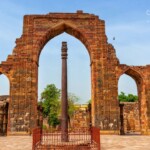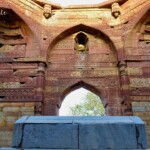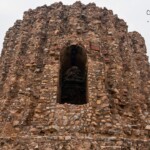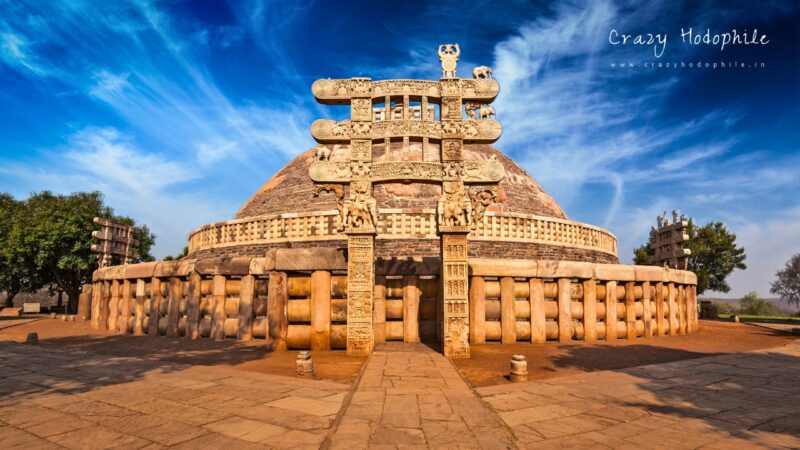Qutb Minar: History, Entry Fee, and Secrets You Must Know | Crazy Hodophile | 2024
The Qutub Minar, a significant historical monument in Delhi, is recognized as a UNESCO World Heritage Site and is among India’s most visited landmarks. This isn’t just a monument; it is a historical beacon narrating tales of conquest, culture, and craftsmanship. Let’s embark on a journey to explore this Heritage Site and uncover its secrets.
Table of Contents
Overview
Located in the Mehrauli area of Delhi, the Qutb Minar is a minaret constructed primarily of red sandstone and marble. Rising 72.5 meters (238 feet) high, it features five distinct stories, each adorned with intricate carvings.
Gallery
Historical Background
The story begins with the Ghurid invasion of India. In 1192 AD, Muhammad Ghori, with his general Qutb-ud-din Aibak, defeated Prithviraj Chauhan in the Second Battle of Tarain. To celebrate this victory and symbolize the establishment of Muslim rule in India, Qutb-ud-din Aibak, the first Sultan of Delhi and founder of the Mamluk Dynasty, laid the foundation of the Qutb Minar in 1192.
Constructed with materials from demolished Hindu and Jain temples, it stands as a reminder of the transition from Hindu to Muslim rule. According to historical records and inscriptions found at the Qutub Complex, 27 Hindu and Jain temples were demolished before the construction of the Quwwat-ul-Islam Mosque, which is located within the Qutub Complex.
Interestingly, the minar wasn’t completed by one ruler. Qutb-ud-din Aibak completed only the first story; his successor, Shams-ud-din Iltutmish, added three more stories in 1220. Later, in the 14th century, Firoz Shah Tughlaq replaced the damaged uppermost story and added a fifth one. In the early 16th century, Sikandar Lodi undertook further repairs and renovations to ensure the minar’s stability and longevity.
Architecture and Design
The Qutb Minar exemplifies the early Indo-Islamic style. It features five distinct stories, each with its unique charm. The base of the minar, primarily made of red sandstone, has inscriptions in Arabic and Nagari scripts. The first three stories are made of red sandstone, and adorned with intricate carvings and verses from the Quran. The fourth story, made of marble, provides a beautiful contrast. Finally, the fifth story, a mix of marble and sandstone, completes this complex structure.
The Qutub Complex
The Qutub Minar is not an isolated structure. It’s part of the larger Qutub Complex, which houses several other significant historical monuments:
- Quwwat-ul-Islam Mosque: One of the earliest mosques in India, this mosque was constructed alongside the Qutub Minar. Built using materials from demolished Hindu and Jain temples, it reflects the complex religious and political dynamics of the era.
- Alai Darwaza: The southern gateway of the Quwwat-ul-Islam Mosque, built by Alauddin Khilji in 1311 AD, is known for its intricate carvings and impressive dome.
- Alai Minar: An ambitious, unfinished tower envisioned by Alauddin Khilji, intended to be twice the height of the Qutb Minar.
- Alauddin Khilji’s Madrasa and Tomb: These remnants of an Islamic seminary include the tomb of Alauddin Khilji, with the tomb of the ruler nearby.
- Iron Pillar: A metallurgical marvel from the 4th century AD, the Iron Pillar stands tall in the complex, famous for its rust-resistant properties due to its high-phosphorus iron composition.
- Tomb of Shams al-Din Iltutmish: The resting place of Iltutmish, the second ruler of the Delhi Sultanate.
- Tomb of Imam Zamin: A smaller yet significant structure, this tomb belongs to Imam Zamin, a prominent Islamic scholar.
Lesser Known Facts
- Temple Demolition: Qutb-ud-din Aibak demolished 27 Hindu and Jain temples before its construction.
- Architectural Influence: The design of the Qutub Minar closely resembles the Jam Minar in Afghanistan, showcasing shared architectural traditions.
- Spiral Staircase: The tower features a spiral staircase with 379 steps leading to the top.
- Tilted Structure: The Qutb Minar is slightly tilted due to natural factors and centuries of aging but remains structurally sound.
- Miniature Version: There’s a miniature version of the Qutub Minar located in Hastsal village, Delhi. Built-in the 14th century, this smaller replica stands as a testament to the original’s architectural influence.
- Earthquake Resilience: Qutb Minar has also survived earthquakes. It was damaged in 1505 and 1803 but was carefully restored each time.
- Tragedy: On December 4, 1981, a stampede occurred due to a staircase lighting failure, which led to darkness at the Qutub Minar. This incident resulted in the death of 45 people and left many others injured.
- Heritage Site Tag: The Qutub Minar was designated as a UNESCO World Heritage Site in 1993, acknowledging its historical and cultural significance.
Visiting Information
Opening and Closing Time
Sunrise to Sunset
Best Time to Visit
The winter months are ideal, with pleasant weather. If you visit in summer, go early in the morning or late in the afternoon to avoid the heat.
Entrance Fee
The entry fee is INR 40 for Indian visitors and INR 600 for international visitors (including access to other monuments in the complex). Children under 15 years enjoy free entry with valid ID proof.
Note: Tickets for the Qutub Minar can be purchased directly at the site or conveniently booked online through the Archaeological Survey of India (ASI) website. If you opt for online booking, ensure you complete your purchase before 9 PM, as the online ticketing system closes after this time.
Website Link of ASI: https://asi.paygov.org.in/asi-webapp/#/ticketbooking
Tips and Details for Visitors
- Plan for Non-Peak Hours: To avoid crowds and fully immerse yourself in the serene ambiance, visit early in the morning or late in the afternoon.
- Wear Comfortable Clothing: During summer, opt for light, breathable fabrics and carry a hat or umbrella to shield yourself from the sun. In winter, be prepared for chilly mornings with layered clothing.
- Stay Hydrated: Especially if visiting in warmer months, keep a water bottle handy to stay refreshed during your exploration.
- Bring Your Camera: Photography is allowed, so take advantage of this opportunity to capture the monument’s stunning architecture.
- DIY Tour Option: Save money by skipping audio or tour guides. Instead, use the detailed insights and historical references provided in this blog to guide your visit.
- Plan Evening Transport: Evening crowds can make finding public transport more difficult, so it’s advisable to plan accordingly.
- Be Prepared for Pollution: Delhi’s winter pollution can be bothersome, especially for visitors from less polluted regions. Carry a mask if needed and avoid visiting during peak pollution months if sensitive to air quality.
Note: If you are visiting this place purely for its historical significance, be aware that its history includes the use of materials from demolished Hindu and Jain temples in its construction. This aspect of its past may be unsettling for some visitors. If this concerns you, you may consider exploring the many other nearby attractions listed in this blog, which offer diverse experiences without such historical sensitivities.
How to Reach
The Qutb Minar is well-connected by road, metro, and air, ensuring convenient travel options for visitors:
By Metro
The Qutub Minar Metro Station on the Yellow Line is just 2 km from the complex. From the station, you can take an e-rickshaw or walk.
By Bus
Delhi Transport Corporation (DTC) buses frequently connect the area to major parts of Delhi. The nearest bus stop is Mehrauli, 800 meters away.
By Taxi, Bike, or Auto-Rickshaw
All are readily available throughout Delhi. Ride-sharing apps like Rapido, Uber, and Ola also offer convenient options.
By Air
The nearest airport is Indira Gandhi International Airport (IATA: DEL), approximately 12 km from Qutb Minar. You can reach the complex by taxi in about 30–45 minutes depending on traffic.
Location Map for Qutb Minar
Nearby Attractions
- Shri Yogmaya Temple (900 meters): This ancient temple, dedicated to Goddess Yogmaya, is one of the oldest surviving temples in Delhi.
- Ahinsa Sthal (1.2 km): This serene site features a colossal statue of Lord Mahavira, symbolizing peace and non-violence. Nestled amidst lush greenery, it’s an ideal location for a quiet retreat from the city’s hustle.
- Jahaz Mahal (1.5 km): Located in the Hauz-i-Shamsi complex, this 15th-century monument was named for its reflection in the surrounding reservoir, resembling a ship floating on water.
- Mehrauli Archaeological Park (1.5 km): A sprawling area with tombs, stepwells, and centuries-old ruins.
- Chhatarpur Temple (4.6 km): One of the largest temple complexes in India, this architectural marvel is dedicated to Goddess Katyayani.
- Safdarjung Tomb (8 km): A Mughal-era tomb surrounded by sprawling gardens.
- Lotus Temple (9.6 km): A stunning Bahá’í House of Worship, known for its lotus-shaped architecture and peaceful ambiance.
Conclusion
Qutb Minar stands as a remarkable symbol of Delhi’s Islamic rule and architectural brilliance. Adorned with intricate carvings and steeped in the fascinating stories of medieval India, it offers a unique window into a bygone era. Designated as a UNESCO World Heritage Site and meticulously maintained by the Archaeological Survey of India (ASI), the minaret draws heritage enthusiasts from around the world. However, if you’re not particularly drawn to historical monuments, you might simply view it as a tall tower surrounded by ancient ruins.
Related External References:
- Qutb Minar built after demolishing 27 temples
- Unbridled Barbarianism of Alauddin Khilji and Timur
- The Unparalleled Suffering of Hindus Under Muslim Rule
- The Establishment of the Slave Dynasty by Qutb-ud-Din Aibak
- Islamic Invasion Of India: The Greatest Genocide In History
Last Updated on 5 December, 2024

